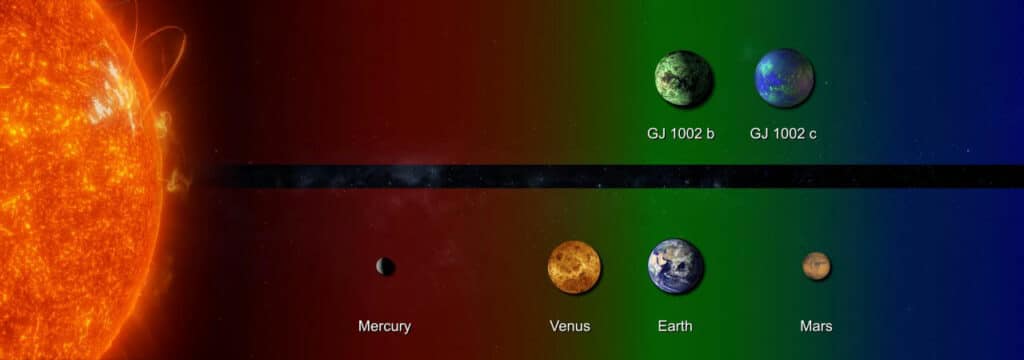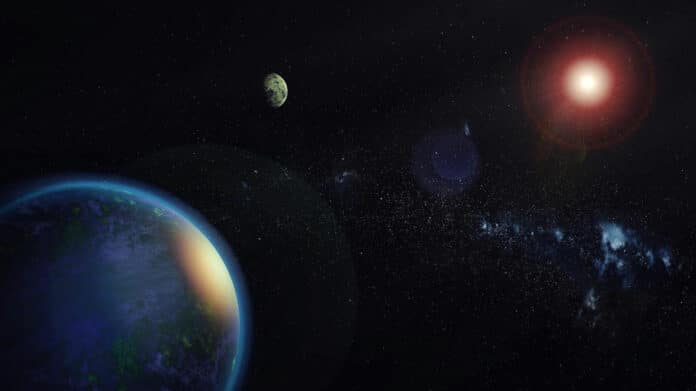An international scientific team led by researchers at the Instituto de Astrofísica de Canarias (IAC) has discovered two earth-like planets orbiting a red dwarf star GJ 1002. Located less than 16 light years from the solar system, the star is cool and faint and has one-eighth the mass of the Sun.
The two planets- GJ 1002b and GJ 1002c- have masses similar to Earth’s. They are in the habitability zone of their star. The planet GJ 1002b takes little more than 10 days to complete an orbit around the star, whereas GJ 1002c takes a little over 21 days.
The proximity of this system to our solar system indicates that the planets are good candidates to study their atmospheres based either on their reflected light or their thermal emission.
Jonay I. González Hernández, an IAC researcher and co-author of the article, said, “The future ANDES spectrograph for the ELT telescope at ESO in which the IAC is participating, could study the presence of oxygen in the atmosphere of GJ 1002c. In addition, both planets satisfy the characteristics needed for them to be objectives for the future LIFE mission, which is presently in a study phase.”
The CARMENES observed the star between 2017 and 2019, whereas ESPRESSO observed it between 2019 and 2021.

As the star has a low temperature, the visible light from the star is too faint to measure its variations in velocity with the majority of spectrographs. But, thanks to the high sensitivity of CARMENES over a wide range of near-infrared wavelengths, the team was able to study GJ 1002 from the 3.5m telescope at Calar Alto observatory.
Alejandro Suárez Mascareño, an IAC researcher, said, “Nature seems bent on showing us that Earth-like planets are very common. With these two, we now know 7 in planetary systems quite near to the Sun.”
Journal Reference:
- A. Suárez Mascareño, E. González-Alvarez et al. Two temperate Earth-mass planets orbiting the nearby star GJ 1002. Astronomy and Astrophysics. DOI: 10.1051/0004-6361/202244991
